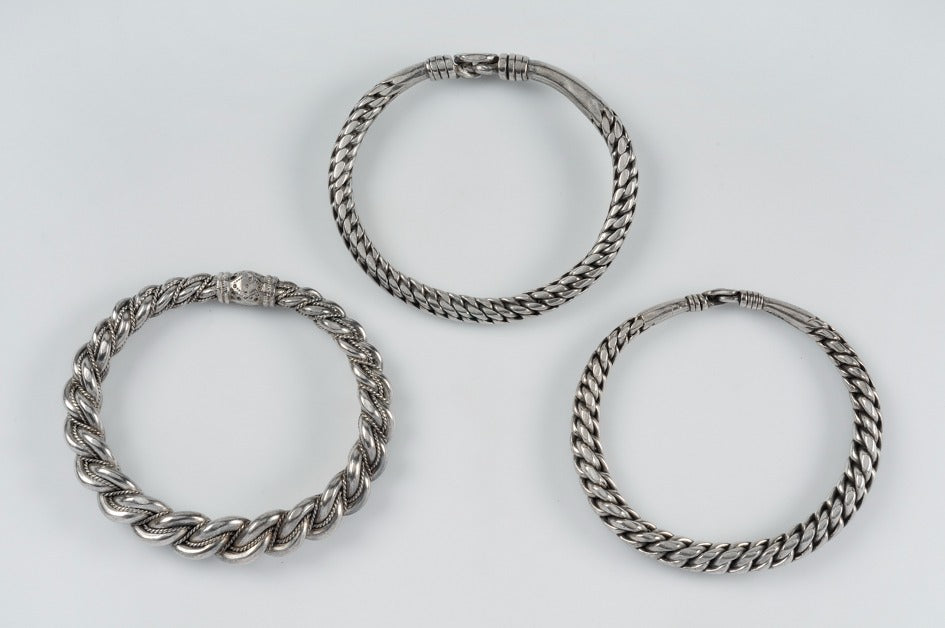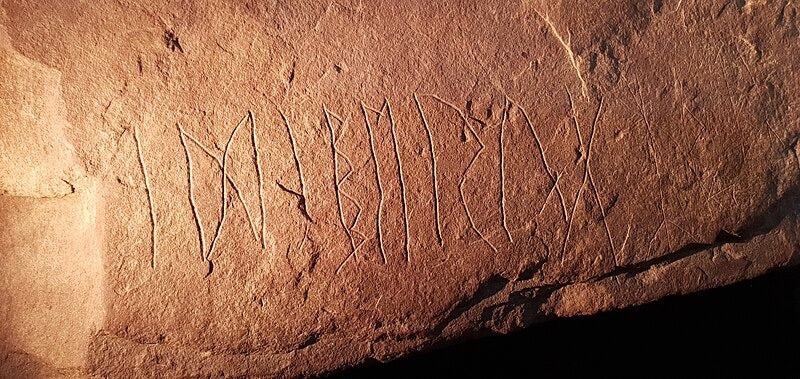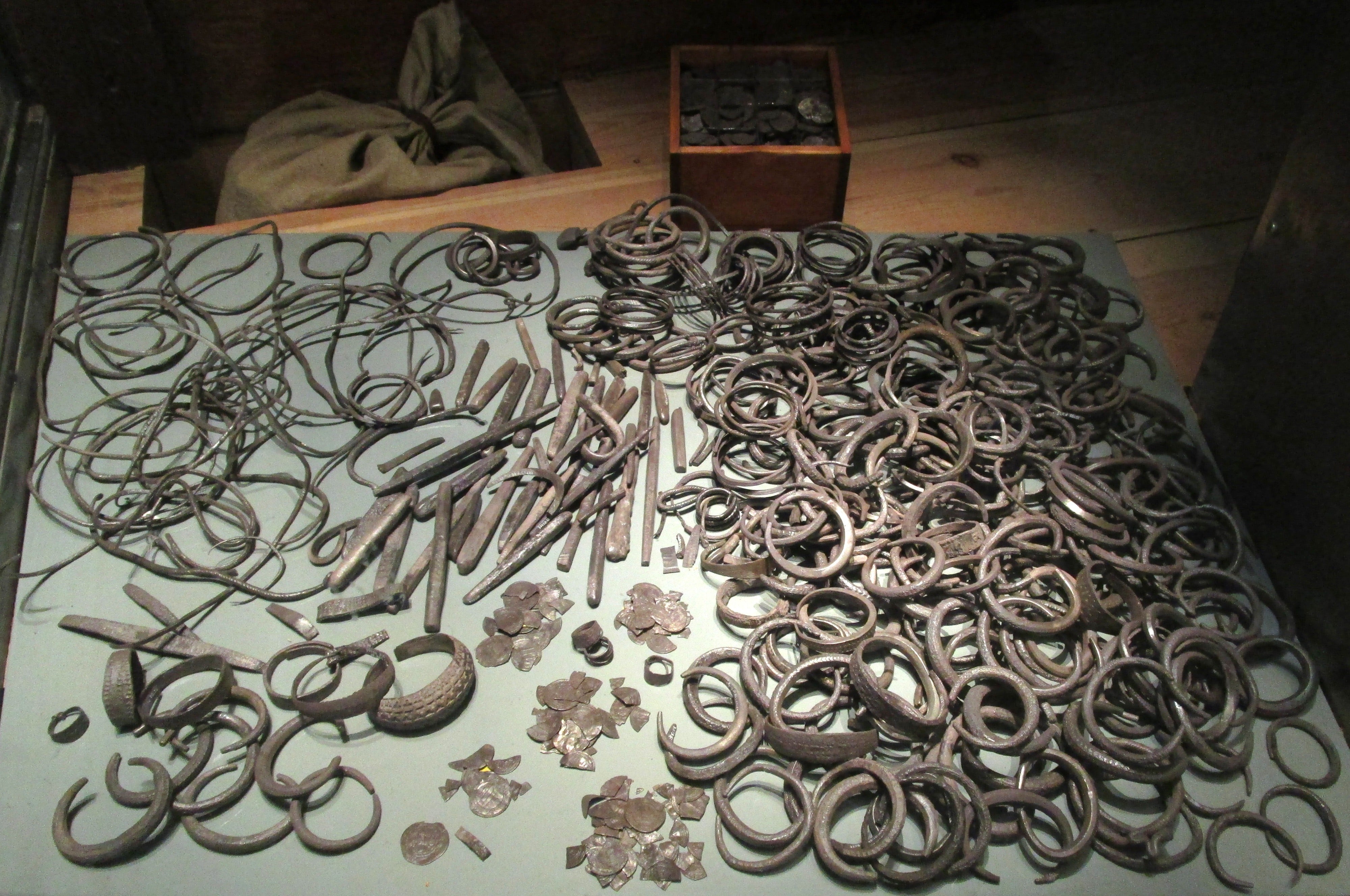
Gotland's Spillings Hoard: Exploring the Largest Viking Silver Hoard
In the world of archaeology, some discoveries are like whispers from the past. Others are more like shouts. The Spillings Hoard? It's a veritable roar, echoing across more than a millennium to challenge everything we thought we knew about Viking wealth and commerce.
The Discovery of a Lifetime

A Farmer's Unexpected Find
On a crisp autumn day in 1999, the earth yielded its secrets to an unsuspecting farmer. As his plow bit into the rich soil of the Spillings farm, little did he know that he was about to stumble upon the largest Viking silver hoard ever discovered. The glint of metal in the furrow was not just another stone to be cast aside, but the key to unlocking a treasure that had lain hidden for over a millennium.
The Initial Excavation
Word spread like wildfire, and soon the quiet fields of Spillings were abuzz with activity. Archaeologists descended upon the site, their eyes alight with the fervor of discovery. As they carefully peeled back layers of earth, the true magnitude of the find began to reveal itself. It was as if the ground itself was weeping silver, each careful brush stroke unveiling more coins, arm rings, and ingots.
The Treasure's Composition

Silver Galore: Coins and Ornaments
The Spillings Hoard is a numismatist's dream and a historian's puzzle. Over 14,000 silver coins spilled from the earth, each one a tiny window into the vast trade networks of the Viking world. But it wasn't just coins that filled the coffers of this ancient trove. Arm rings, the epitome of Viking wealth and status, lay tangled with ingots and other ornaments, their combined weight tipping the scales at nearly 200 pounds of silver.
Exotic Artifacts from Distant Lands
Among the sea of silver, other treasures caught the eye – artifacts that spoke of lands far beyond the shores of Scandinavia. Bronze Buddha figurines whispered of eastern trade routes, while Kufic coins sang songs of Arabian markets. Each piece was a thread in the intricate tapestry of Viking commerce, weaving a tale of a world far more interconnected than many had imagined.
Historical Context of the Spillings Hoard
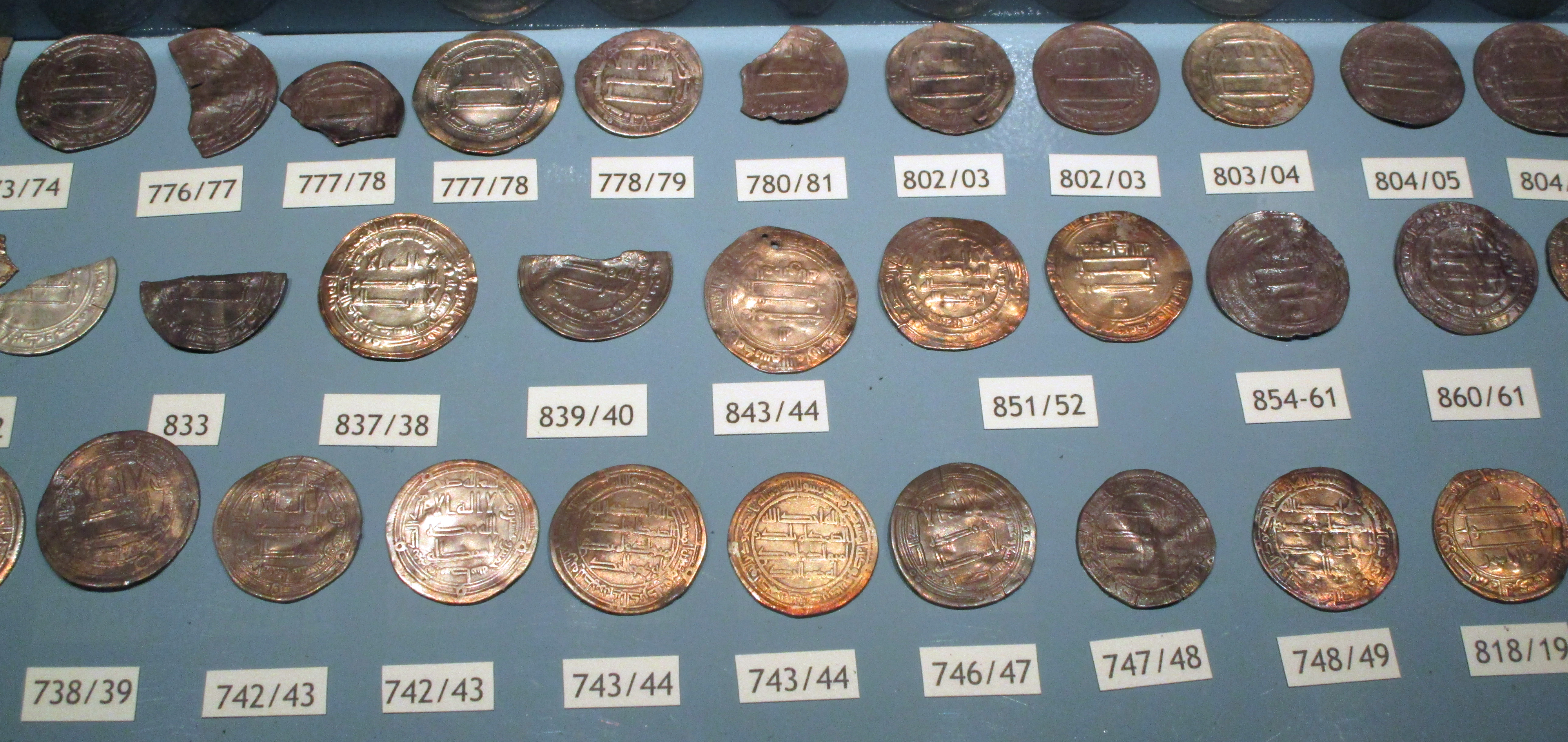
The Viking Age on Gotland
To understand the Spillings Hoard, one must first grasp the unique position of Gotland during the Viking Age. This island, rising from the Baltic Sea like the back of some great leviathan, was more than just a rocky outpost. It was a hub of trade, a melting pot of cultures, where the silver that flowed from east to west and back again pooled and gathered.
Trade Networks and Silver Economy
The Vikings were not just raiders but traders par excellence. The sheer volume of silver in the Spillings Hoard paints a picture of a sophisticated economy, one where silver was the lifeblood of trade. From the fjords of Norway to the steppes of Russia, from the markets of Baghdad to the ports of Constantinople, Viking ships and Viking silver forged connections that spanned continents.
Unraveling the Mystery

Diagram of the depositories in the stone foundation at Spillings
Dating the Hoard
The task of dating the Spillings Hoard fell to the meticulous hands of archaeologists and numismatists. Like detectives piecing together an ancient puzzle, they examined every coin, every artifact. The youngest coins in the hoard whispered a date – circa 870-880 CE – giving us a tantalizing glimpse into the moment when this vast wealth was consigned to the earth.
Theories on Its Origin and Purpose
But why bury such a fortune? Was it an offering to the gods, a tithe to ensure good fortune? Or perhaps it was the emergency fund of a wealthy merchant, hidden away in troubled times? Some scholars suggest it may have been the war chest of a powerful chieftain, buried for safekeeping and never retrieved. The earth holds its secrets close, and the true story of the Spillings Hoard remains shrouded in mystery.
The Hoard's Significance
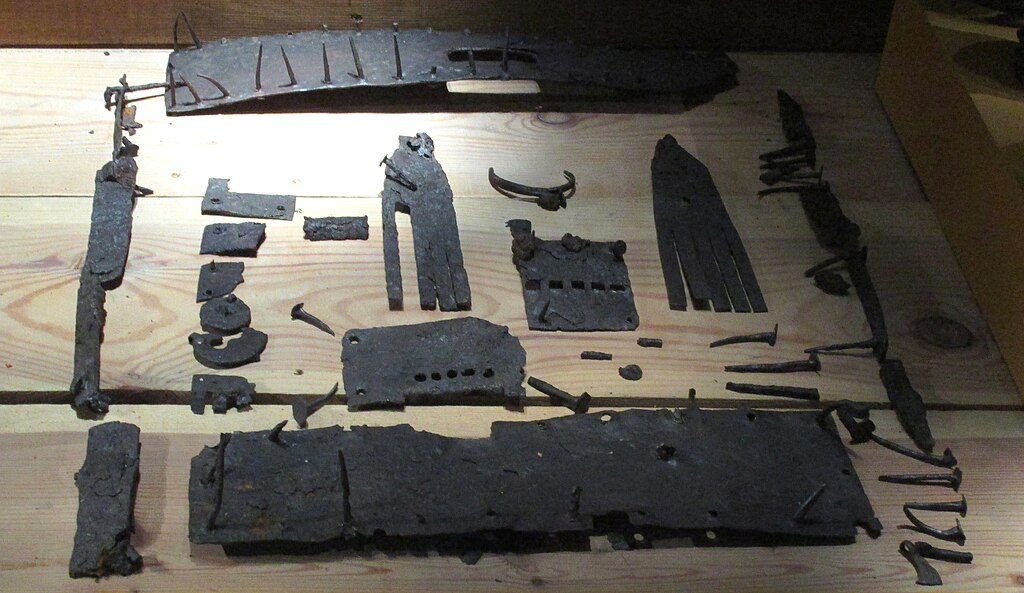
Iron fittings from the chest in the bronze cache / Photo: W.Carter, CC BY-SA 4.0.
Archaeological Importance
The Spillings Hoard is more than just a collection of precious metal – it's a time capsule, preserving a moment in Viking history. Each coin, each artifact, is a piece of data, helping archaeologists to reconstruct trade routes, understand economic systems, and paint a more vivid picture of life in the Viking Age.
Rewriting Viking History
This massive find has forced historians to reconsider many of their assumptions about Viking society. The sheer wealth represented by the hoard suggests a level of economic sophistication that goes far beyond the popular image of Vikings as mere plunderers. It speaks of a culture deeply engaged in international trade, with connections spanning vast distances.
Preservation and Exhibition

Conservation Efforts
Preserving such a massive hoard presents unique challenges. Teams of conservators have worked tirelessly to clean and stabilize the artifacts, fighting against the ravages of time. Each piece must be carefully documented, its secrets teased out through a battery of scientific tests.
Public Display at Gotland Museum
Today, visitors to the Gotland Museum can stand in awe before the Spillings Hoard. The glint of silver still has the power to captivate, just as it did over a thousand years ago. But now, each coin and ornament tells a story – of trade, of craftsmanship, of a world both strange and familiar.
Conclusion: A Window into Viking Prosperity
The Spillings Hoard stands as a shining example of the wealth and sophistication of Viking Age society. It challenges our preconceptions, forcing us to see the Vikings not just as warriors and raiders, but as savvy traders and skilled craftsmen. As we gaze upon this treasure, we are reminded that history is often more complex, more nuanced than we imagine. The Spillings Hoard is not just a collection of silver – it's a key that unlocks our understanding of a pivotal moment in European history.
FAQs
- How much is the Spillings Hoard worth in today's currency?
While it's difficult to put an exact price on historical artifacts, the silver content alone would be worth millions. However, its historical and archaeological value is considered priceless.
- Were there any gold items found in the Spillings Hoard?
Interestingly, despite its vast size, the hoard consisted primarily of silver. Gold items were notably absent, which is typical for Viking hoards from this period.
- How does the Spillings Hoard compare to other Viking treasure finds?
The Spillings Hoard is the largest Viking silver treasure ever found, significantly larger than other famous hoards like the Cuerdale Hoard in England.
- Are there theories about who might have owned the Spillings Hoard?
While the owner's identity remains unknown, the size of the hoard suggests it belonged to an extremely wealthy individual or group, possibly a powerful chieftain or successful merchant.
- Has the discovery of the Spillings Hoard led to any new archaeological excavations in the area?
Yes, the find has sparked renewed interest in Gotland's Viking Age history, leading to several new excavations and surveys in the region.
References
Östergren, M. (2008). "The Spillings Hoard(s)." In S. Brink & N. Price (Eds.), The Viking World (pp. 330-333). Routledge.
Williams, G. (2011). "The Spillings Hoard and the Viking Silver Hoards of Gotland." Current Swedish Archaeology, 19, 11-28.
Jonsson, K. (2001). "The Silver Hoards from Spillings, Gotland." In B. Paszkiewicz (Ed.), Proceedings of the 10th International Numismatic Congress (pp. 813-819). Association Internationale des Numismates Professionnels.
Graham-Campbell, J. (2013). Viking Art. Thames & Hudson.
Pedersen, U. (2016). "Into the Melting Pot: Non-Ferrous Metalworkers in Viking-Period Scandinavia." In J. Graham-Campbell & S. M. Sindbæk (Eds.), Vikings and the Viking Age (pp. 177-192). Aarhus University Press.
"File:Iraq silver coins Spillings Hoard.jpg" by W.carter is licensed under CC BY-SA 4.0.
"File:Silver bracelets Spillings Hoard 2.jpg" by W.carter is licensed under CC BY-SA 4.0.
"File:Silver bars Spillings Hoard 2.jpg" by W.carter is licensed under CC BY-SA 4.0.
"File:Location of depositories in stone foundation, Spillings.jpg" by W.carter & Gotogo is licensed under CC BY-SA 3.0.
